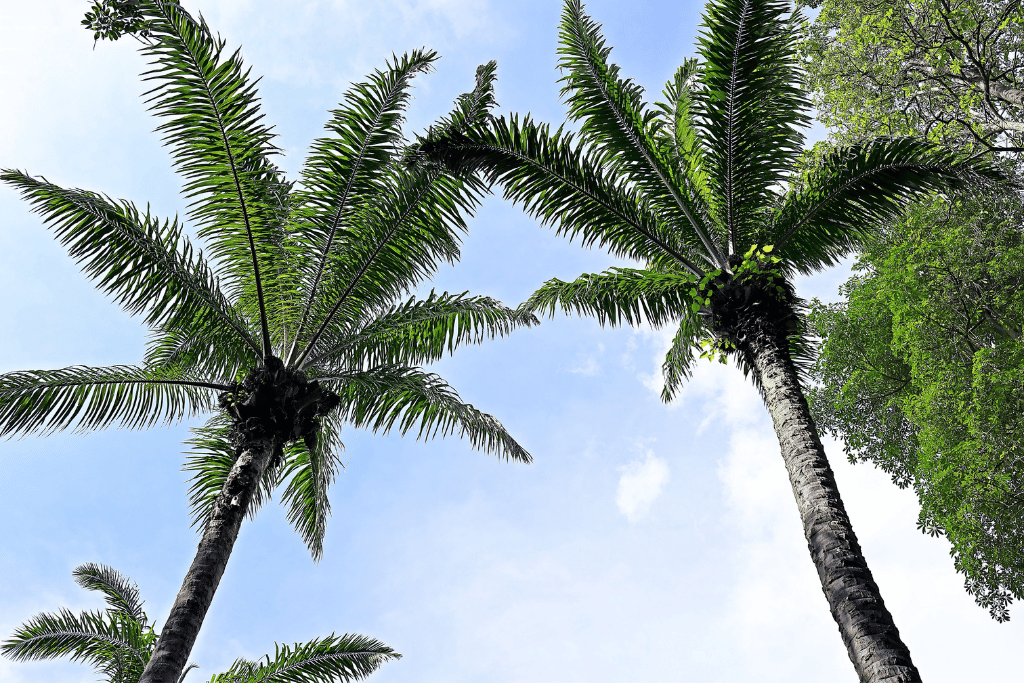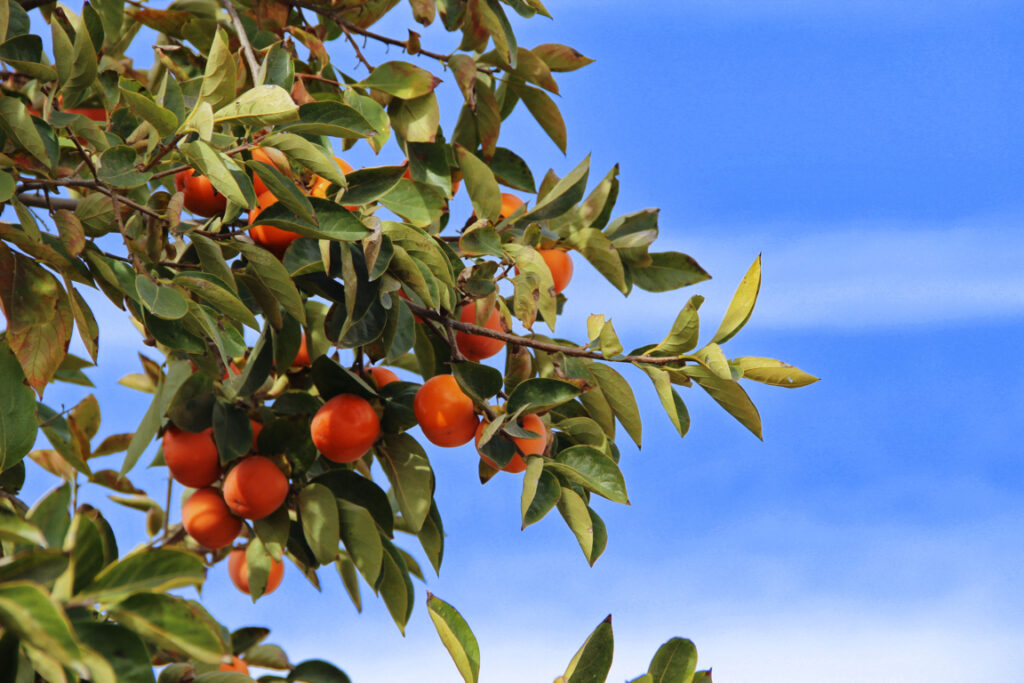
Have you been under the impression that you need to wave goodbye to a green outdoor display just because you have a dark veranda? Then let’s expel this misbelief real quick. Why? Because numerous different leafy greens thrive just fine under limited light conditions. Below I’ll guide you through a wide selection of the best hanging plants for your shaded porch that will instantly boost your mood and home aesthetics!
Best Hanging Plants For a Shaded Porch

1. Coral Bells (Heuchera spp.)

Coral bells are perennial plants native to North America. They have stunning foliage and small, delicate flowers. This attractive flora is often grown for its colorful leaves, which come in shades of green, purple, red, and bronze.
Coral bells are a magnificent choice for hanging containers on shady patios because they enjoy partial to full shade. In addition, they are easy to care for and require minimal maintenance. These greens prefer well-draining soil and should be watered regularly, but be careful not to flood the potting mix to prevent root rot. As an added advantage, you don’t have to worry about deer or vermin nibbling at your plants during the night, as they have quite a bitter taste.
2. Fuchsia (Fuchsia spp.)

The fact that the Latin name of Fuchsia is the same as how we refer to the plant says a lot about its maintenance too. This green doesn’t make a huge fuss about anything – as long as you water it regularly and provide it with well-drained soil, it will thank you by producing fabulous flowers.
Fuchsias originate from Central and South America and are adored houseplants all over the world. Their popularity is largely due to their charming bell-shaped flowers that typically come in pink, purple, and red.
These pretty stunners boast dark green leaves that are either smooth or slightly hairy. Fuchsias can be easily found in local nurseries in a variety of sizes, from tiny hanging basket ones to large shrubs that can grow up to 10 feet (about 3.5 meters) tall! As they prefer at least partial shade to sustain their best looks, they make perfect candidates for hanging planters.
3. Ferns (Pteridophyta)

Ferns are the most suitable pick for hobby gardeners that don’t want to dedicate much time and effort to maintaining their greenery. These flowerless plants are native to tropical regions of the Americas and have lush, cascading fronds that create a striking visual effect in any indoor or outdoor space. They are happy to live in overhead pots, and only require moderate watering and some indirect sunlight to live long. In case you’re not sure which variety to choose, I recommend going for a Boston fern. Its lacy and full foliage has the potential to grow large and bushy, that’s guaranteed to attract the eyes of your guests and bypassers.
4. Creeping Jenny

Meet the lovely Lysimachia nummularia, better known as Creeping Jenny. This vibrant vining plant hails from Europe and western Asia and has since been adopted by gardeners all over the globe for its charming appearance and versatility. The vine has small round leaves that are a bright shade of chartreuse, and stretch out beautifully from hanging baskets, creating a soft, flowing effect. Since this plant feels in its element in partial to full shadow and needs limited watering and porous soil, it is definitely one of the best hanging plants for a shaded porch.
5. Impatiens

Impatiens walleriana or also commonly known as touch-me-not is like that friend who can’t wait to brighten up your day. This lively beauty, with its bold and vivid blooms, is a real showstopper in any garden. Hailing from East Africa, impatiens is a natural at bringing life and color to even the darkest of spaces. It’s like the superhero of the plant world, thriving in the shade where other greenery would wither away.
But what really sets it apart from other pot-dwellers is its low maintenance and fuss-free nature. It’s the most appropriate leafy companion for those who want all the pizzazz without all the work. Plus, with its quick adaptability, it’s a real chameleon that can change colors and thrive in almost any shady spot.
6. Bleeding heart
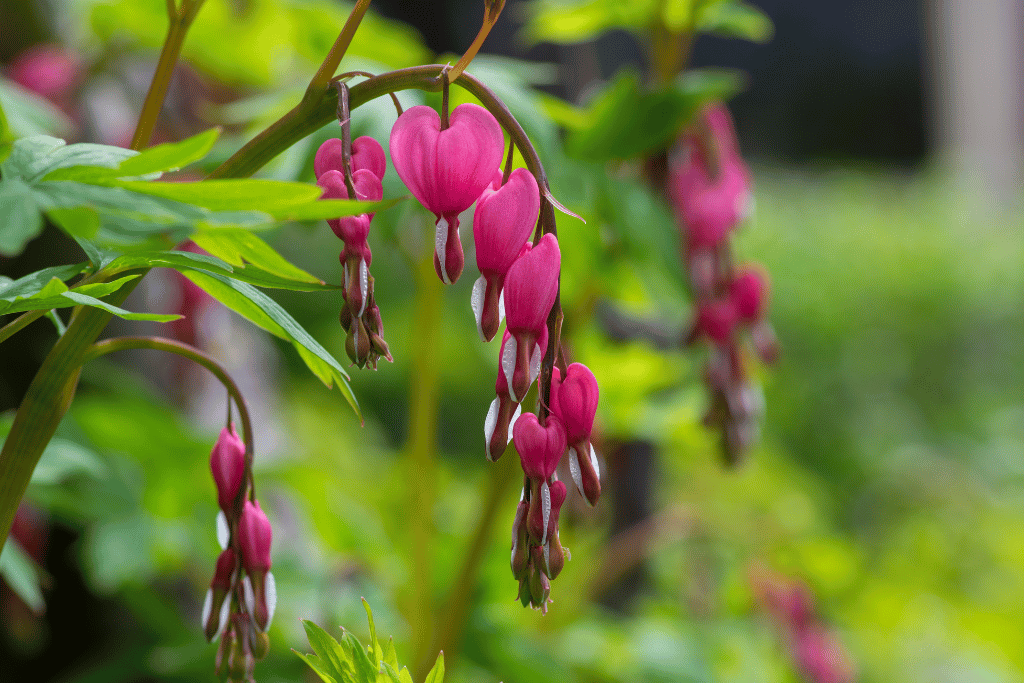
Bleeding heart is the true Casanova of the plant world! Its Latin name, Dicentra spectabilis, sounds like something straight out of a Hogwarts herbology textbook, but don’t be fooled – this green is absolutely muggle-friendly.
Originating from Asia, its delicate, fern-like foliage and heart-shaped flowers are sure to steal the spotlight in your green oasis. Its pink and white blooms hang in rows like miniature lockets that look similar to hearts, earning it the nickname “Lady in the Bath.”
But why is it perfect for sun-scarce patios, you ask? Well, this charmer appreciates cooler, shaded environments, making it a top addition to your dark porch. Plus, its romantic appearance will have you feeling like you’re in a fairytale every time you step onto your veranda.
7. Monkey Flower (Mimulus ringens)
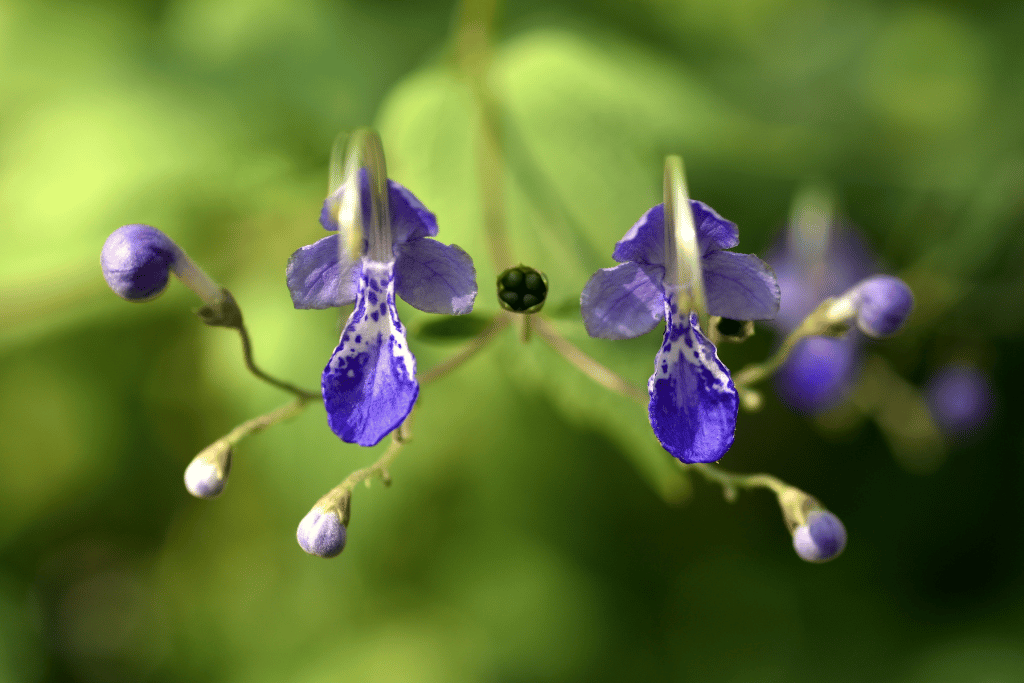
Meet monkey flower, a Latin American native with colorful and quirky trumpet-shaped flowers that come in shades of red, pink, yellow, purple, and orange, often with playful speckles or spots. This plant earned its name for its flowers that closely resemble a monkey face that adds a hint of whimsy even to the simplest of gardens. As an added advantage, they are excellent at thriving in low-light environments. Their ability to adapt to dimly-lit porches is enough to go ahead and plant them bravely in your empty hanging baskets!
8. Begonia (Begonia rex)
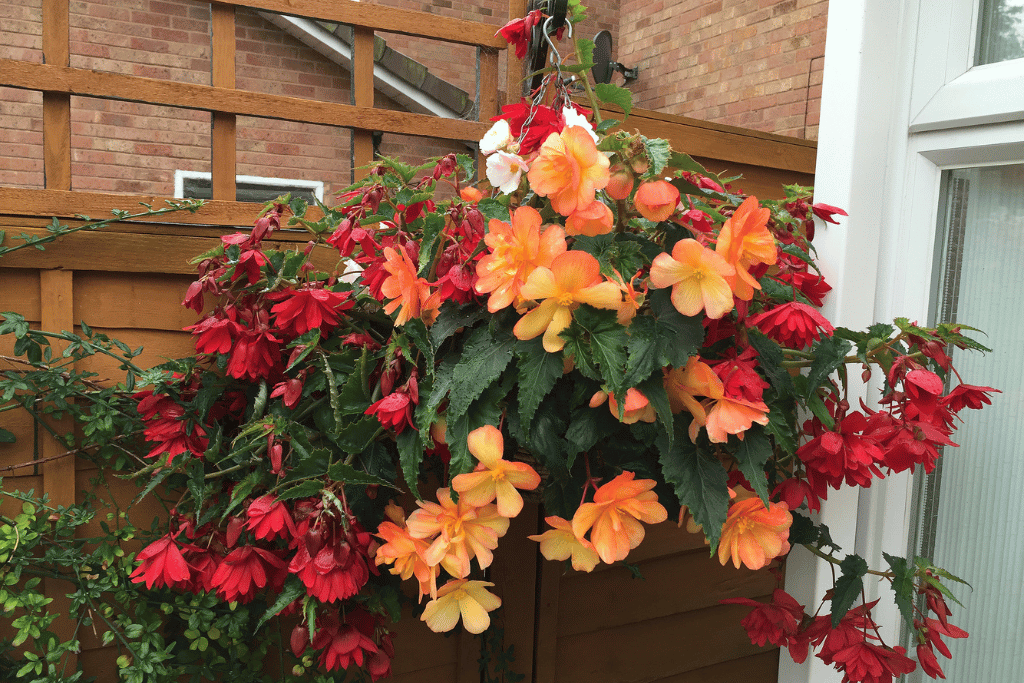
Begonia is a proud member of the family Begoniaceae and originates from Southeast Asia. With its striking foliage that comes in an array of colors and patterns, it’s no wonder that they are a favorite among green thumb enthusiasts.
From deep greens to bright pinks, and everything in between, their leaves are truly fascinating. Given their compact size, they fit well in small spaces and since they easily withstand limited sun exposure, they are among the best hanging plants for a shaded porch. In addition, they are super simple to sustain – just keep the potting mix moist and give the begonias a little bit of fertilizer every now and then, and they’ll reward you with long-lasting and splendid foliage all year long. And, if you’d really like to take things up a notch, go for Begonia maculata that strikes a truly one-of-a-kind foliage – plus, the propagation of polka dot begonia is super easy too!
9. Hosta
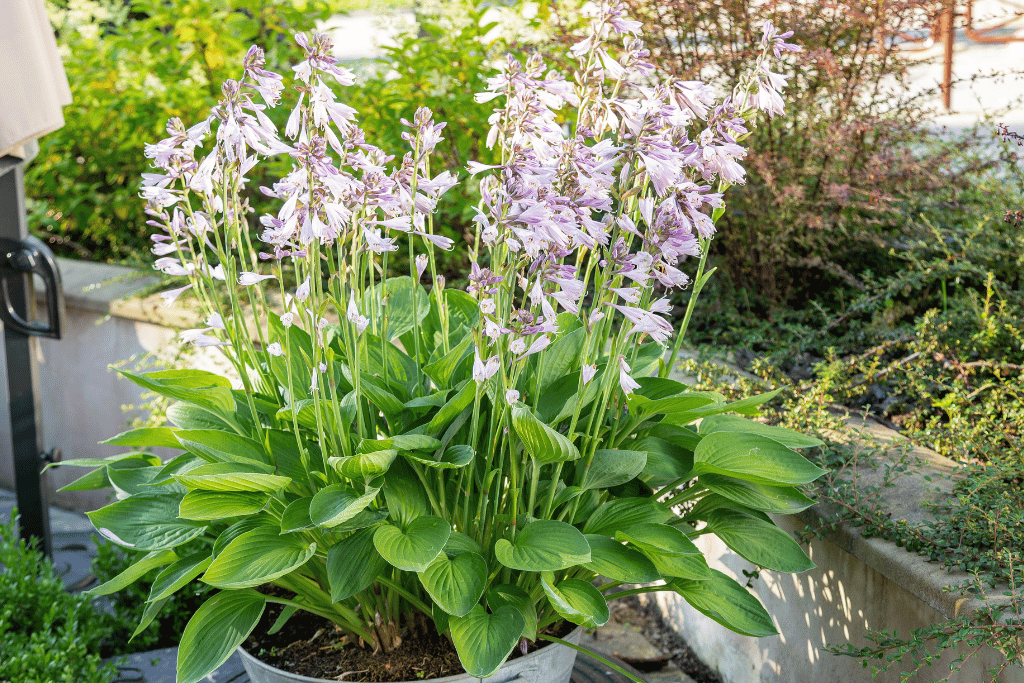
Let me introduce you to the hosta plant, the true superstar of shadowed verandas. This green’s scientific name is Hosta plantaginea, and it hails from the Land of the Rising Sun, Japan. With their dense, heart-shaped leaves and graceful blooms that dance in the breeze, hostas offer great visual pleasure.
Not to mention, they are available in a wide range of colors and patterns, from deep greens to variegated whites and yellows. These greens thrive in partial to full shade, so don’t be afraid to put them in that dark spot on your porch that has previously made all other plants miserable. What you’ll get in return is added texture, depth, and elegance to your house front.
10. Lobelia

Lobelia is a unique and fabulous plant with a name that rolls off the tongue like music. Its Latin name is Lobelia erinus and is a South-African aborigine. With its slender stems, this gorgeous flora has an almost ethereal appearance, and its bright blue, pink, or white flowers add a splash of color to lightless verandas. It expects to be provided with a drink on a regular basis to keep its potting mix consistently moist but not soaking. Also, it’s good to know that deadheading spent blooms will encourage new growth and prolong the blooming period.
Recommendations for Hanging Plants Placed In The Shade
- Although particular greens are said to thrive in complete shade, it’s important that they receive at least some sunlight, even if it’s mild or filtered, as otherwise, photosynthesis won’t work.
- Make sure that you select well-draining soil and hanging baskets with drainage holes where excess water can escape. This is essential since the mix won’t dry out as rapidly as under sunny conditions.
- Perform routine checkups on your shadow-friendly plants to ensure they haven’t developed fungal diseases. These conditions are more likely to appear due to the soil remaining moist for a considerably longer time.
Conclusion
The best hanging plants for a shaded porch can be just as diverse as greenery anywhere else in or around your home. From blossomless to flowering flora and creepers, the options are only limited by your imagination. So, get those gardening gloves on, set up your ladder, and glam up your garden!
Frequently Asked Questions (FAQ)
Will plants in hanging baskets grow in the shade?
Yes. Even though a slight amount of sunlight is needed for them every day to be able to perform photosynthesis, shadow-tolerant greenery develops just fine in surroundings with scarce light sources. Overhead pots usually have great air circulation, so the only important thing you must take care of is choosing well-draining soil for your leafy friends. This is crucial because in shade the soil dries out slower, so it needs excellent drainage for excess water to get away.
How do I prevent fungal diseases in plants placed in shady locations?
Although you have a higher chance to come across fungal diseases in your potted plants placed in the shade, you can avoid them by keeping some easy tips. It’s significant to check up on your greens regularly to make sure they are healthy. Also, choose well-draining soil and plant your flora in containers with drainage holes. Finally, maintain a consistent but not overwhelming watering schedule to circumvent the possibility of root rot in your plants.


